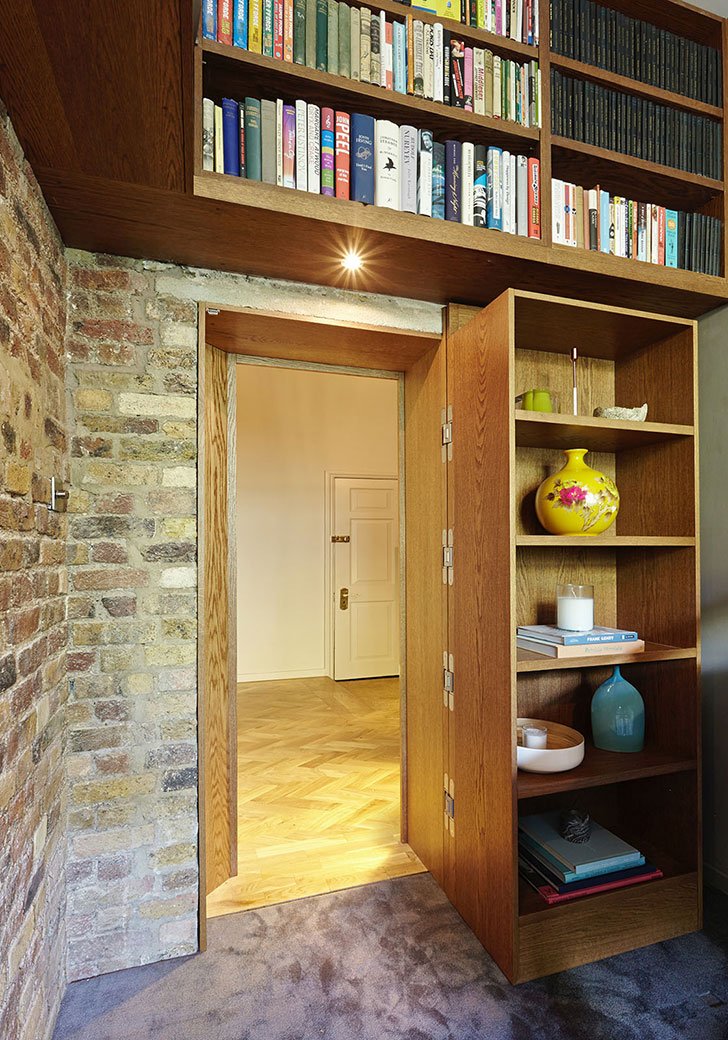#5990. Library Portal: An Elegant Combination of Brick and Wood in a Multifunctional Doorway

This elegant space exemplifies the brilliant integration of functional architectural elements into residential interior design. We are looking at a transitional area styled as a library portal, where a traditional doorway is transformed into a multifunctional space with character and individuality.
The main accent of the interior is the contrast between rough brickwork and warm wooden furniture and finishes. The exposed brick wall brings an element of industrial aesthetics and creates textural diversity that gives the space depth and tactility. This technique can be successfully used when designing interiors for country houses to create a sense of authenticity and connection with architectural heritage.
The upper part of the doorway is skillfully transformed into bookshelves filled with colorful volumes, which not only maximizes the functionality of the space but also creates visual interest. The built-in spot lighting under the shelves provides soft illumination for the passage, which is both a practical and aesthetic solution.
To the right of the doorway is an open shelving unit with decorative elements — a bright yellow vase with a floral ornament, turquoise and white vessels, and books. These items bring color accents to the predominantly wooden interior design.
Beyond the doorway, a bright room with herringbone parquet flooring is visible — a classic choice that never goes out of style and adds sophistication to the space. The contrast between the textured carpet in the hallway and the geometric pattern of the parquet in the next room creates a clear visual delineation of spaces.
This design approach, where functional elements (doors, passages) become full-fledged decorative and useful objects, demonstrates a contemporary approach to residential space design, where every square centimeter is used thoughtfully and effectively.